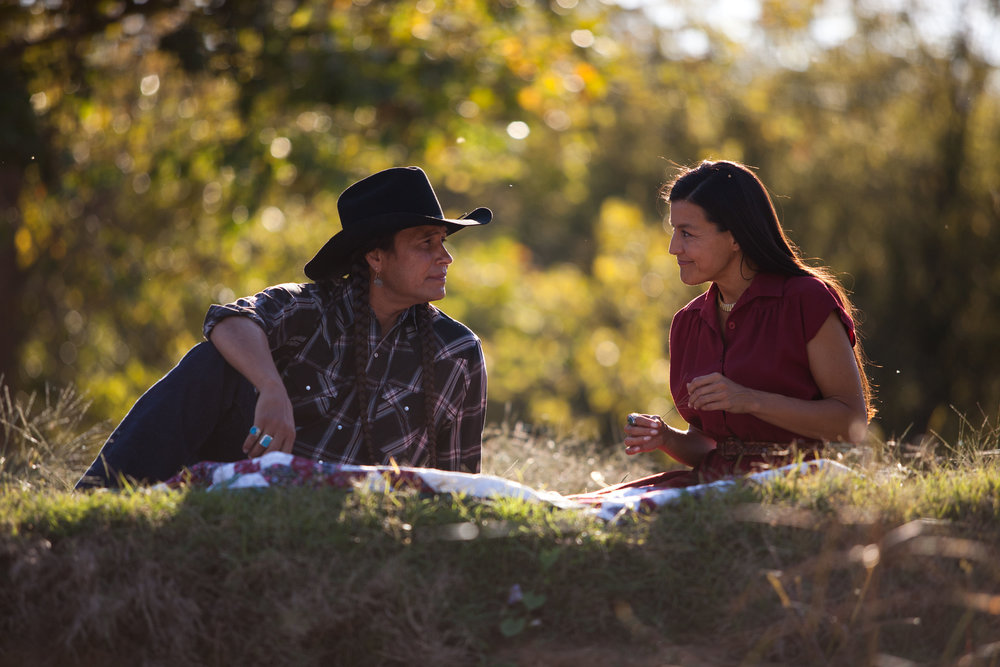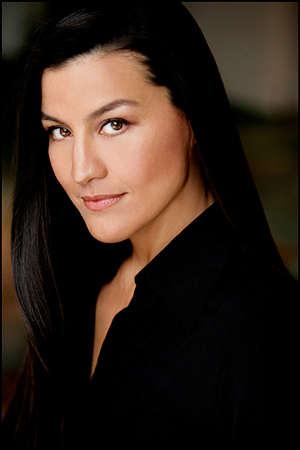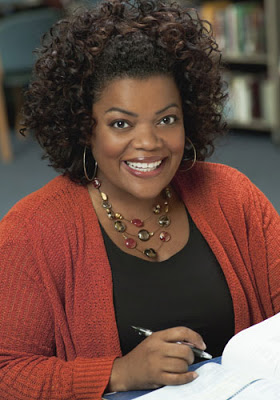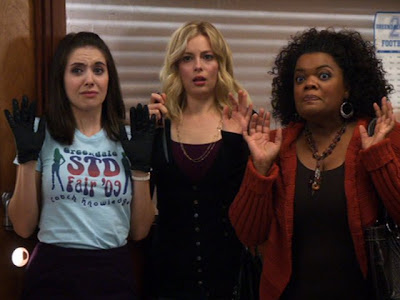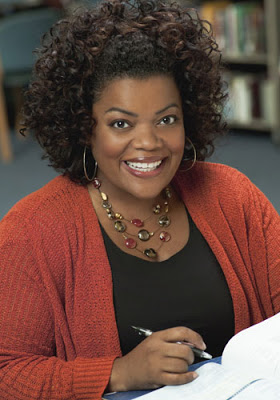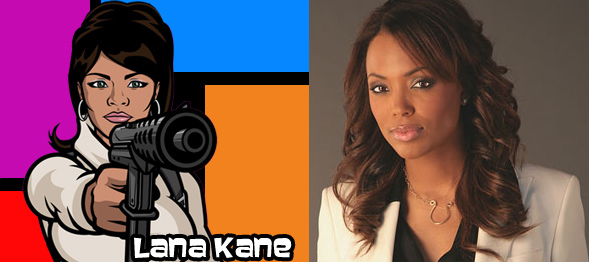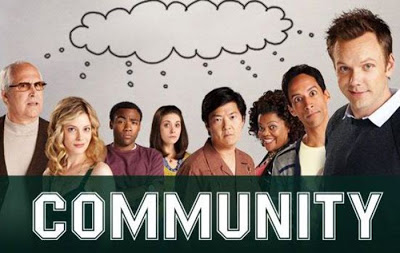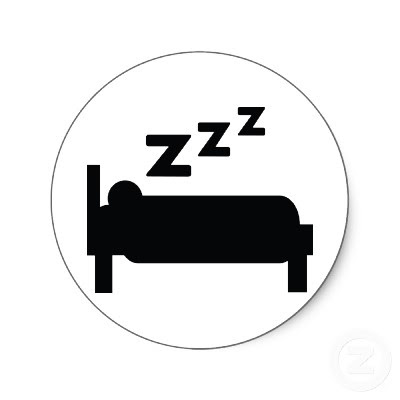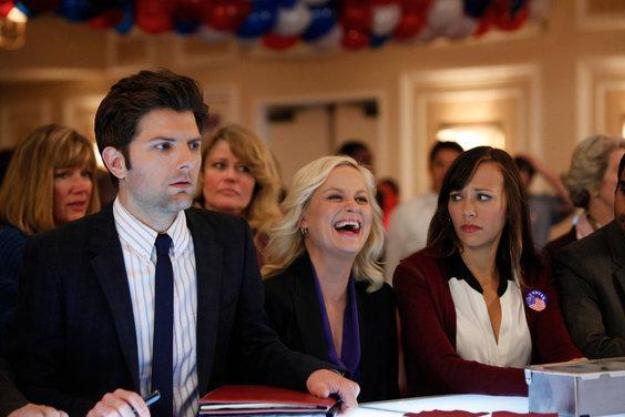This post written by staff writer Amanda Morris originally appeared at Bitch Flicks and is reposted here as part of our theme week on Indigenous Women.
“Long before the United States existed, the Cherokee people had a society based on democratic principles,” a male voice says at the opening of The Cherokee Word for Water. A man in a cowboy hat walks toward the camera alongside a river, trees bare of their leaves, the landscape dominant. Later, we learn that this man is the real Charlie Soap (Wilma Mankiller’s husband and the film’s co-director). The voice continues, “They were guided by the spirit of balance between the self and community, elders and youth, men and women. One Cherokee community was reminded of that balance in the early 1980s.” The image transitions to a closer view of the river carrying a soft layer of mist above her surface, the sun gently touching the tops of the distant trees. The next statement from the voiceover is in the Cherokee language and subtitles read, “The Cherokee word for water is,” beckoning viewers to listen.
Wilma Pearl Mankiller became the first modern female Chief of the Cherokee Nation in 1985 after working with volunteers from the small rural community of Bell, Oklahoma to bring water to the town. The Cherokee Word for Water is the story of this extraordinary woman and leader whose activism on behalf of her community continues to resonate across the Cherokee Nation today.
[youtube_sc url=”http://www.youtube.com/watch?v=9h5TsMBO_nQ”]
“If there is no water, many communities begin to scatter, fall apart. That’s what was happening by the 1970s,” the voiceover continues as the visual shifts to broken down equipment, abandoned wood frame homes, and the faces of enduring elders. Viewers are introduced to a vision of real people surviving years of broken treaties, neglect, and empty promises; people trying to survive in the face of a serious problem: no water. The narrator continues, “Then something happened that no one expected. It started with the return of one Cherokee woman, Wilma Mankiller.”
Kimberly Guerrero plays Mankiller in the film and after the narrator’s introduction of the community’s problem, we see Wilma (Guerrero) driving a brown station wagon loaded with suitcases and clothing, smiling at her sleeping children in the front seat. She is headed home to Cherokee territory in Oklahoma.
As she settles into her original home community, Wilma suffers the same transitional pains that any woman might face upon moving home: difficulty finding a job, an oldest daughter who doesn’t want to be there, and bureaucratic red tape that stalls the simplest tasks. However, she also suffers a terrible head-on collision that breaks her body apart, after which she has time to heal, think, and plan. Wilma’s friend, George Adair (Roger Vann) stops by with a box of chocolate and she asks for his help. “Let me go talk to the water,” he says, and the scene shifts to his ceremony by a spring in the woods. When he returns to Wilma, he holds her hands and announces, “You gonna be alright.”
Three months later, as Wilma and Charlie Soap (Moses Brings Plenty) begin to visit Bell to gather support for the waterline project, they are greeted with friendly, but aloof, skepticism. Just saying that the tribe wants to help isn’t enough for the Cherokee residents of Bell, who are used to being lied to and let down by government authorities. When words fail them, Wilma sets out to show the community that she is serious about helping them. She and Charlie start by fixing Mae Canoe’s (Cindy Soap) roof, changing out the screen door of another’s home, and other tasks around the community. It is clear that in this locale, actions speak much louder than words, especially for people who are painfully familiar with broken promises. Even after some people in the community begin to open their homes and minds to Wilma and Charlie, Mae’s daughter Elizabeth (Jamie Loy) scolds Wilma, “You might get my mom to believe your fancy talk, but you ain’t foolin’ me. … Keep your dreams to yourself, lady.”
The film features many quiet moment of contemplation, sometimes near water and sometimes indoors, as when we see Wilma writing in her journal after her encounter with Elizabeth. We hear Guerrero’s voiceover say, “Trust. Like with Mae’s daughter. We need hers, but she needs to see we can make things better, together.”
Once the community learns to trust Wilma and seems to be getting on-board, her determination to succeed with the Bell waterline project runs into opposition from tribal politicians. Chief Ross Swimmer (Darryl Tonemah) calls Wilma into his office to alert her that her project is getting a lot of attention, that the idea of “poor Cherokees pulling themselves up by their bootstraps” is a story that the media will love. She assumes this is good news. “You and Charlie making progress out there can be seen as a threat,” Chief Swimmer says, crossing his arms across his chest, sending a strong defensive body language message that reflects a practical concern of all politicians: potential new voters who may oppose the status quo. Wilma and Charlie have many obstacles to overcome including intense and personal political pressure from tribal leaders who don’t want the project to succeed, but Wilma remains adamant in her response to the Chief, “This project will not fail.”
The Cherokee Word for Water has captured the attention of Gloria Steinem, who said, “The Cherokee Word for Water is a very rare story because it is about the empowerment of people who have been made to feel they have no power.”
[youtube_sc url=”http://www.youtube.com/watch?v=QCtmZhxOK9s”]
Furthermore, in a background video for the film, Kimberly Guerrero said, “It’s a woman’s story, it’s Wilma’s story, and it’s about how a woman goes about unifying a community.” And that unification begins with truth. Charlie warns Wilma once the community commits to voluntarily digging 18 miles of waterline through rocky terrain without a firm budget yet in place, “Wilma, around here, when you say something, it better be true.”
[youtube_sc url=”http://www.youtube.com/watch?v=w2d24Bj1GiQ”]
The determination of one woman to make a difference for her people against political pressure, bureaucratic red tape, and community skepticism comes to life in The Cherokee Word for Water, and serves as a necessary reminder that sovereign Indigenous nations remain a vibrant part of this land with strength, passion, stories, and experiences of their own.
For those of you interested in activism, this film was funded through The Wilma Mankiller Foundation with profits going back to the foundation “to support economic development and education throughout Indian Country,” according to the official website. The Cherokee Word for Water would make a wonderful addition to any course or community workshop in women’s studies, Indigenous studies, American studies, or politics, as it “demonstrates the positive attributes of modern Native communities and provides positive role models for Native youth in the mainstream media.”
Note: Chief Mankiller walked on in 2010, but her Foundation, spirit, and works live on.
Dr. Amanda Morris is an Associate Professor of Multiethnic Rhetorics at Kutztown University of Pennsylvania with a specialty in Indigenous Rhetorics.
